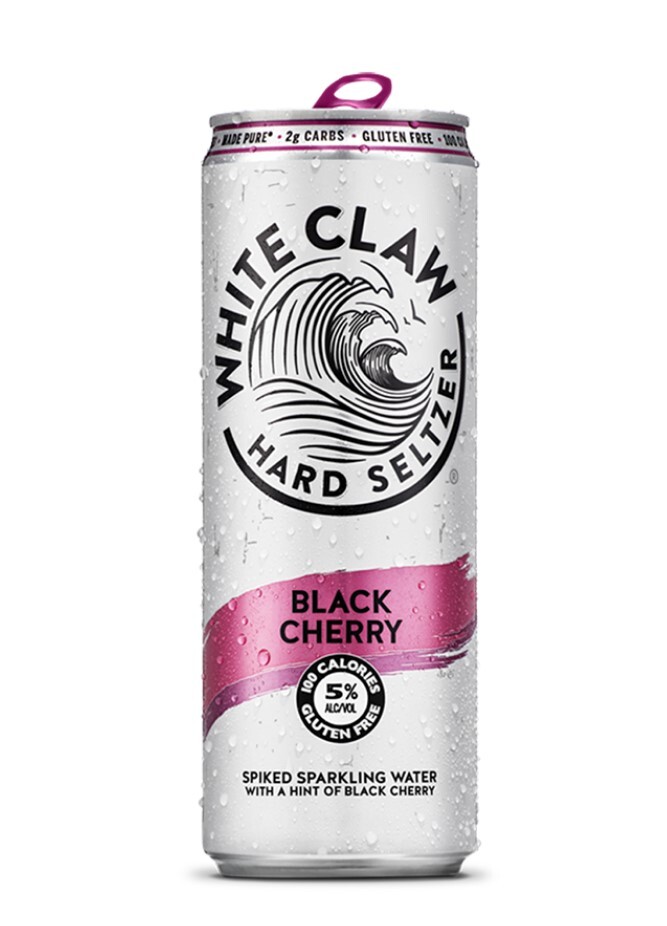How White Claw Decapitated The Hard Beverage Market

If you have attended a single alcohol-fueled event in the last couple of years, chances are that you’ve seen a tall skinny can clutched in the hands of attendees. Now, with the explosion of imitators, some of which have admittedly improved on the formula, it could be any number of alcoholic seltzers, but for a good while, there was only one gladiator in the arena: White Claw. Like the polar bear possessing paws matching its name, it barreled into what’s traditionally a tough and crowded market and mauled its way into not only relevance but into the thick of competition with the alcohol old guard.
It’s a bit remarkable to think about just how suddenly and violently White Claw burst onto the scene. It filled a market that no one knew existed, because why would they? Before it took over, the phrase “alcoholic seltzer” was not exactly something that inspired anything but furrowed eyebrows. It sounded more like a joke somebody would make about the taste of Bud Light than something that would be actually purchasable.
Don't Miss
Obviously there were the cocktail stalwarts of the vodka/tequila/whiskey/scotch and soda, but they have a couple key differences. As far as whiskey or scotch and soda, those pretty much require you to have lost a friend on the battlefield or captained a large sailing ship to enjoy. For tequila soda, or the closest ancestor of the hard seltzer, vodka soda, they’re more of a diet option for people that want to drop a size of the jeans they leave in the middle of their apartment after drinking 8 of them. Either way, a vodka soda or tequila soda also retains a certain amount of class, as long as you’re able to align both eyes while ordering it.

Then, of course, there’s the many heavily flavored beer alternatives that exist basically to be slammed by teens behind bleachers so they can get brave enough to do mouth stuff with each other. Your hard lemonades, your Smirnoff Ices, et cetera. They taste like melted slurpee and they’ll leave you with a headache that feels like you just got dropped out of a UFO into a cornfield. With that, most bars don’t even stock these, since they’re not legally supposed to serve 17-year-olds, and buying them at most gas stations will get you thoroughly ID’d if you’re not fully bald. They’ve existed forever, going back to the flop that was Zima, and they’ve never even been able to cause the king that is beer to adjust nervously on their throne.
White Claw throws all that to the wind. They didn’t try to come onto the scene as a “canned cocktail”, or with more than the smallest hint of a flavor, or really with any sort of explanation at all. They rolled up like “hey, we think people basically just want to drink water that gets them fucked up” and good god, they were right. Sure, they have flavors, but they’re so minimal that they might in fact be psychosomatic. Maybe I’m only tasting raspberries because I’ve been TOLD to taste raspberries. They just peppered the country with boxes of canned boozewater and said “these are 5% alcohol and we refuse to elaborate on why or how.”
So where exactly did it come from? Surprisingly to me, White Claw was not actually the first hard seltzer launched–that honor, arguably, belongs to Bon & Viv, who launched Spiked Seltzer in 2013. It’s still around and available, but it’s fairly inarguable that the product wasn’t only roundly lapped by the success of White Claw, but may owe much of its success to White Claw breaking the market open. White Claw launched in 2016, at the same time as Truly, but by far was the most successful of the three, in a win that marketing consultants could use as evidence to support their bloated salaries for decades.

Mark Anthony Group
If I had to speculate, I would guess that White Claw succeeded by making their cans and advertising more energy-drink-esque and vague, while Bon & Viv and Truly still very much looked like you’d expect a diet-focused drink to. Whatever the secret sauce of success was, White Claw was doused in it. Three years later, in July 2019, White Claw outsold Budweiser. You know, the “King of Beers”? Could there be a more perfect beer to unseat to mark the finality of the hard seltzer coup d’etat?
The man behind the revolution, the hard seltzer Spartacus, was Anthony Von Mandl, no stranger to the malt beverage circuit. He, and his company, the Mark Anthony Group, are in fact the inventors of the much-ballyhooed Mike’s Hard Lemonade. They’d started to see the seltzer wave rise, and managed to create the perfect product to capitalize. It must have been nice too, to realize that they basically just had to pull Mike’s Hard Lemonade off the conveyor belts before they added the lemonade part and they’d have a world-beater. I also fully understand why, but am somewhat upset that they didn’t just call it Mike’s Hard Water. They both sort of sound like bottled pee, which I enjoy.
In my journey to find out exactly what made White Claws take over and launch a thousand questionable Instagram DMs, it seems that there is no massive, obvious lever that was pulled here. Against all odds, the success seems to be from nothing more than good old fashioned foresight. Apparently, from the day we exited the womb, we have all deeply desired nothing more than alcoholic seltzer, and it just took all of civilization so far for someone to figure it out. This is a turning point. Barbecue coolers will never be the same.
Top Image: Mark Anthony Group/Pixabay